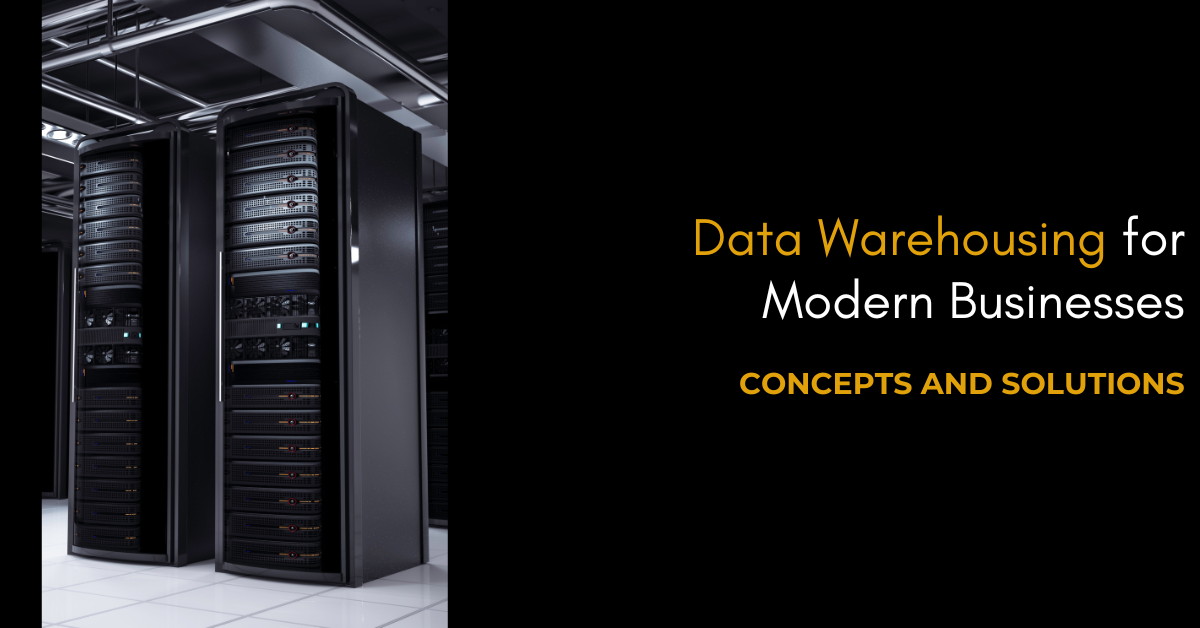Data Warehousing for Modern Businesses: Key Concepts and Solutions
Data management is one of the most important aspects of running a modern business. With the rise of big data and the increasing need for accurate insights, organizations are turning to advanced systems that allow them to store, manage, and analyze vast amounts of data efficiently. One such system is data warehousing, a powerful approach that brings together data from multiple sources into a unified storage system for reporting, analysis, and decision-making.
Table of Contents
Understanding data warehousing
What Is Data Warehousing? Data warehousing refers to the process of collecting data from different sources and storing it in a single, accessible location. This structured storage makes it easier for businesses to analyze data and extract meaningful insights. The goal is to create a comprehensive view of the organization’s data, enabling better reporting and decision-making.
By integrating data from various systems into one warehouse, businesses can avoid the confusion of managing multiple databases. This centralization of data makes it easier to extract valuable insights for operational and strategic decisions.
Centralized access to data
One of the most significant advantages of using a data warehouse is centralized access to information. When data from different sources is integrated into one location, employees can easily access the information they need without having to search through multiple systems. This improves the speed and efficiency of decision-making processes.
A data warehouse also ensures consistency, as it provides a single version of the truth. All teams and departments in the organization access the same data, reducing discrepancies and errors that can arise from working with outdated or inconsistent datasets.
Advantages of data warehousing
There are several key benefits of data warehousing systems. First, it allows organizations to process and analyze data faster. With all data stored in one place, businesses can generate reports and insights quickly, which is crucial for making timely decisions.
Improved data quality is another significant advantage. In a data warehouse, data is cleaned and validated before it is stored. This ensures that the information is accurate, reducing errors and helping businesses base decisions on reliable data.
A well-designed data warehouse enables businesses to combine information from different systems, leading to a more complete understanding of the organization. This can uncover patterns, trends, and opportunities that might not be apparent when looking at isolated data points.
Storing data in the cloud
The rise of cloud computing has led to the emergence of cloud data warehousing. These cloud platforms have revolutionized the way organizations manage and store data. By adopting cloud data warehousing, businesses can benefit from lower upfront costs, reduced maintenance, and the ability to scale their data storage needs.
Cloud data warehousing offers the flexibility to expand storage capacity as business requirements grow. Instead of purchasing expensive hardware and infrastructure, organizations can simply pay for the resources they use. This shift to cloud solutions has made it easier for smaller businesses to access sophisticated data management tools.
Building a solid data warehouse architecture
A data warehouse’s architecture is crucial to its success. This structure typically involves multiple layers that organize the data and make it easier to process. The primary components of a data warehousing architecture include data staging, data storage, and data presentation.
Data staging is where raw data is first brought in from various sources. It undergoes cleaning, transformation, and validation before being loaded into the data storage layer. Once stored, the data is organized in a way that ensures efficient access.
The final layer, data presentation, allows users to access and analyze the data using business intelligence tools. This layer provides the interface through which employees can generate reports, analyze trends, and create visualizations based on the data stored in the warehouse.
Best practices for effective data warehousing
To maximize the benefits of data warehousing, organizations should follow several data warehousing best practices. One key practice is establishing strong data governance policies. These policies define who can access the data and ensure that it is used properly. Effective data governance also helps maintain the security and integrity of the data stored in the warehouse.
Another important best practice is ensuring that the data is of high quality. Regularly cleaning and validating the data prevents errors from accumulating and ensures that reports and insights are based on accurate information.
Businesses should also focus on scalability when designing their data warehousing solutions. As the volume of data grows, the system should be able to scale to handle increased storage requirements. Scalability ensures that businesses can continue to benefit from their data warehousing system as they grow.
Finally, security measures should be a top priority. Data warehouses store sensitive business information, so protecting this data from unauthorized access is essential. Encryption and secure access controls are critical to safeguarding the data.
Data warehousing in the cloud
Cloud technology has made a significant impact on the way businesses handle data. By moving data warehousing in the cloud, organizations can take advantage of greater flexibility and reduced operational costs. Cloud platforms offer built-in scalability, so businesses can easily scale their data storage and processing power as needed.
Data warehousing in the cloud also allows teams to access data from anywhere, improving collaboration across different locations. This flexibility makes it easier for remote teams to work together and ensures that all employees are working with the most up-to-date information.
As more businesses move their data operations to the cloud, the future of data warehousing in the cloud will continue to grow. With the added benefits of automation, AI-powered analytics, and improved security, cloud data warehousing is set to become the standard for data management in the future.
Data warehousing plays a vital role in helping businesses manage and analyze large amounts of data. By centralizing data from multiple sources into one system, businesses can improve reporting, decision-making, and overall efficiency. The benefits of data warehousing, including faster reporting, improved data quality, and better insights, are invaluable for organizations seeking to stay competitive in the digital age.
Cloud data warehousing has made it even easier for businesses to scale their data storage needs while lowering costs. The architecture of data warehousing ensures that data is organized efficiently for quick access and analysis. Following data warehousing best practices for data management and security can help organizations maximize the value of their data.
As more companies shift to the cloud, the future of data warehousing in the cloud will continue to evolve. Cloud solutions will offer even more powerful tools for data analysis, making it easier for businesses to harness the power of their data to drive success.
Looking to optimize your data strategy? Connect with Novas Arc to unlock the full potential of data warehousing digital transformation for your business.
FAQs
Q1. What do you mean by data warehousing?
Data warehousing refers to the process of collecting, storing, and managing large volumes of data from multiple sources in a centralized system. This organized storage makes it easier for businesses to access, analyze, and report on data to support decision-making.
Q2. Why is a data warehouse?
A data warehouse is used to centralize data from various sources, ensuring consistency and accuracy. It allows businesses to store historical data in one place, making it easier to analyze and generate insights. This leads to better decision-making, reporting, and data management.
Q3. What is the process of data warehousing?
The process of data warehousing involves several key steps:
- Data extraction: Gathering data from various source systems.
- Data transformation: Cleaning and converting the data into a consistent format.
- Data loading: Storing the processed data into the data warehouse.
- Data presentation: Making the data accessible for analysis and reporting using business intelligence tools.
Q4. What are the three types of data warehousing?
The three types of data warehousing are:
- Enterprise Data Warehouse (EDW): A centralized warehouse that stores all enterprise-wide data for reporting and analysis.
- Operational Data Store (ODS): A database that stores current, transactional data for short-term reporting and operational analysis.
- Data Mart: A smaller, specialized data warehouse focused on a specific department or business unit’s needs, typically drawing data from the EDW.
Author








